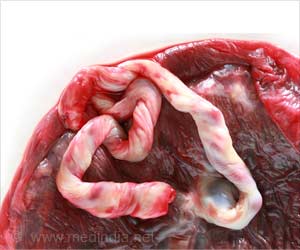Brain cancer patients with the poorest prognosis -- those with a type of deadly tumor known as glioblastoma multiforme -- may survive longer with a drug that chokes off a tumor's blood supply.
Brain cancer patients with the poorest prognosis -- those with a type of deadly tumor known as glioblastoma multiforme -- may survive longer with a drug that chokes off a tumor's blood supply.
According to a new study by researchers at Duke’s Preston Robert Tisch Brain Tumor Center, a combination of bevacizumab -- commonly known as Avastin -- and a standard chemotherapy agent, may increase the amount of time GBM patients can survive without tumor growth, and may significantly increase their overall survival.“For this study, we looked at patients whose tumors had returned after initial treatment, and we found that this drug combination could significantly improve outcomes for these people, who are typically given about three to six months to live,” said James J. Vredenburgh, M.D., a neuro-oncologist at Duke and lead investigator on the study. “These results represent tremendous hope for these patients and their families.”
The researchers published their findings in the October 20, 2007 issue of the Journal of Clinical Oncology and an editorial accompanied the publication. The study was funded by the National Institutes of Health, the Preston Robert Tisch Brain Tumor Research Fund and the Bryan Cless Research Fund.
In this pilot study, researchers administered a combination of bevacizumab and irinotecan, a standard chemotherapeutic agent, to 35 patients whose GBMs had returned. Each patient had already been treated with a standard therapy regimen, possibly including surgery, radiation and chemotherapy.
Almost half saw no tumor progression after six months, and almost 80 percent were still alive six months after diagnosis.
Patients with recurrent GBM who are treated with standard therapies, such as chemotherapy alone, have tumor progression at six months in about 75 percent of cases and fewer than 50 percent are alive after six months.
Advertisement
Bevacizumab has been heralded as a success in treating several types of cancer, including colorectal and lung cancers. It is one member of a class of drugs called anti-angiogenics, which work by stunting the otherwise rapid growth of blood vessels that feed a tumor’s growth and spread.
Advertisement
About 8,000 to 10,000 new cases of GBM are diagnosed each year in the United States, and GBMs account for about half of all primary brain tumors, according to Accelerate Brain Cancer Cure, a not-for-profit organization dedicated to hastening the discovery of effective treatments for brain cancer. Less than 30 percent of patients diagnosed with primary GBMs are alive one year after diagnosis, and after 10 years, only 2.3 percent are still alive.
Even when GBMs are effectively treated with surgery or medicines, they return in more than 90 percent of all cases.
Source-Eurekalert
VEN/C











